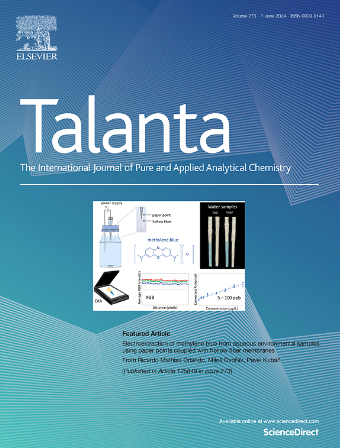Advancing optical nanosensors with artificial intelligence: A powerful tool to identify disease-specific biomarkers in multi-omics profiling
IF 5.6
1区 化学
Q1 CHEMISTRY, ANALYTICAL
引用次数: 0
Abstract
Multi-omics profiling integrates genomic, epigenomic, transcriptomic, and proteomic data, essential for understanding complex health and disease pathways. This review highlights the transformative potential of combining optical nanosensors with artificial intelligence (AI). It is possible to identify disease-specific biomarkers using real-time and sensitive molecular interactions. These technologies are precious for genetic, epigenetic, and proteomic changes critical to disease progression and treatment response. AI improves multi-omics profiling by analyzing large, diverse data sets and common patterns traditional methods overlook. Machine learning tools Biomarkers Discovery is revolutionizing, drug resistance is being understood, and medicine is being personalized as the combination of AI and nanosensors has advanced the detection of DNA methylation and proteomic signatures and improved our understanding of cancer, cardiovascular disease and vascular disease. Despite these advances, challenges still exist. Difficulties in integrating data sets, retaining sensors, and building scalable computing tools are the biggest obstacles. It also examines various solutions with advanced AI algorithms and innovations, including fabrication in nanosensor design. Moreover, it highlights the potential of nanosensor-assisted, AI-driven multi-omics profiling to revolutionize disease diagnosis and treatment. As technology advances, these tools pave the way for faster diagnosis, more accurate treatment and improved patient outcomes, offering new hope for personalized medicine.

求助全文
约1分钟内获得全文
求助全文
来源期刊

Talanta
化学-分析化学
CiteScore
12.30
自引率
4.90%
发文量
861
审稿时长
29 days
期刊介绍:
Talanta provides a forum for the publication of original research papers, short communications, and critical reviews in all branches of pure and applied analytical chemistry. Papers are evaluated based on established guidelines, including the fundamental nature of the study, scientific novelty, substantial improvement or advantage over existing technology or methods, and demonstrated analytical applicability. Original research papers on fundamental studies, and on novel sensor and instrumentation developments, are encouraged. Novel or improved applications in areas such as clinical and biological chemistry, environmental analysis, geochemistry, materials science and engineering, and analytical platforms for omics development are welcome.
Analytical performance of methods should be determined, including interference and matrix effects, and methods should be validated by comparison with a standard method, or analysis of a certified reference material. Simple spiking recoveries may not be sufficient. The developed method should especially comprise information on selectivity, sensitivity, detection limits, accuracy, and reliability. However, applying official validation or robustness studies to a routine method or technique does not necessarily constitute novelty. Proper statistical treatment of the data should be provided. Relevant literature should be cited, including related publications by the authors, and authors should discuss how their proposed methodology compares with previously reported methods.
 求助内容:
求助内容: 应助结果提醒方式:
应助结果提醒方式:


